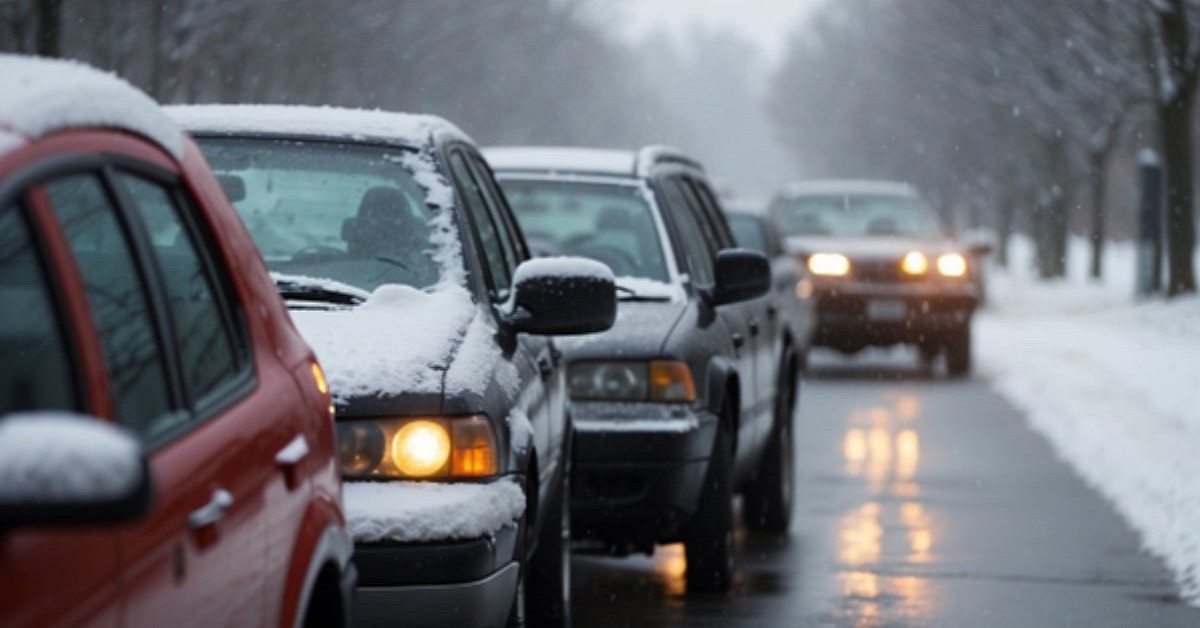In the chaotic aftermath of a multi-vehicle accident, understanding who is liable is crucial for all parties involved. These incidents, often referred to as pile-ups, involve three or more vehicles in a chain reaction. Liability is determined through comprehensive investigations that assess negligence, driver actions, and situational factors.
Law enforcement plays a pivotal role in gathering evidence and interviewing witnesses on the scene. Police reports often serve as critical elements in pinpointing fault, offering initial assessments based on collected testimonies and observations. This thorough examination is crucial, as it influences insurance claims and legal consequences for those involved.

Multiple parties can share blame, which complicates settlements and legal evaluations. Navigating these complexities requires understanding legal frameworks and a structured approach to ensure fair outcomes. Maintaining clarity on these aspects not only aids victims but also streamlines the process for legal professionals and insurance companies, providing a clearer path to resolution.
Evaluating Responsibility in Multi-Vehicle Collisions
Determining responsibility in multi-vehicle collisions involves several critical steps. These steps include analyzing the chain reaction of events, pinpointing the initial negligent party, and assessing subsequent drivers' roles. Accurate evaluation can be essential for legal proceedings, requiring careful consideration of available evidence and expert testimonials.
Understanding the Chain Reaction in Accidents
In multi-vehicle collisions, a chain reaction often plays a significant role. These accidents may start with a single negligent act, which triggers a series of impacts involving multiple vehicles. For instance, a driver might suddenly halt in heavy traffic, causing the vehicle behind to rear-end them, and consequently, other cars pile up in succession.
Understanding how one collision leads to another is vital in establishing liability. Investigators often look at factors like driving speed, road conditions, and driver distractions. By recreating the accident scene, they gather key insights into how each vehicle was involved. Such comprehensive analysis is crucial for assigning responsibility among multiple parties.
Identifying the Initial Negligent Party
Identifying who initiated the collision is essential when assessing liability in multi-vehicle accidents. The initial negligent party is often held accountable if their actions caused the subsequent chain of events. Common scenarios include failing to maintain a safe following distance, abrupt stops without reason, or distracted driving.
Legal frameworks, such as California's pure comparative negligence, can influence liability judgments. This approach means each party's level of fault is assessed, impacting their potential compensation. Experts may examine vehicle damage patterns and driver testimonies to assist in this determination.
Assessing the Role of Subsequent Drivers
Once the primary cause is identified, the focus shifts to the actions of other drivers involved. Even if a driver is not the initial negligent party, they may still hold partial responsibility. Subsequent drivers can contribute to the severity of the accident by speeding, failing to brake, or not keeping a safe distance from the vehicle ahead.
Evaluating the role of later drivers involves analyzing behavior during the incident. Key considerations might include whether quick response techniques were applied or if traffic rules were observed. Legal help after a multi-vehicle collision can assist individuals in understanding their potential liability or pursuing their rights to compensation.
Legal Considerations and Claims Process
When dealing with multi-vehicle accidents, understanding the nuances of legal concepts like negligence and the importance of proper documentation greatly aids in filing successful claims. This section delves into these aspects to provide clarity for those seeking legal help after such collisions.
Navigating Comparative and Contributory Negligence
In multi-vehicle accidents, comparative negligence and contributory negligence play key roles in determining liability. Comparative negligence assigns each party a percentage of fault, impacting the compensation one can receive. It's crucial in states where even slight fault can reduce damages. In contrast, contributory negligence may completely bar recovery if a party is even slightly at fault.
Victims must comprehend these doctrines, as state laws vary widely. Engaging a qualified attorney can help navigate these complex legalities. Legal guidance ensures victims understand how these negligence theories affect their claims and potential compensation. This is particularly vital in states adhering to strict contributory negligence rules.
Filing Claims: Procedures and Challenges
The process of filing claims after a multi-vehicle accident can be daunting. Victims must first notify their insurance provider promptly. Failure to adhere to deadlines set by insurance policies might result in claim denial. Detailed accident reports and medical documentation are essential to back claims.
Claimants should anticipate challenges such as disputes over fault, especially when multiple parties are involved. Here, having legal representation can be beneficial. Attorneys can help navigate negotiations with insurers and, if necessary, represent claimants in court. They ensure all paperwork is accurately filed and deadlines met, improving the odds of fair compensation.
Importance of Evidence and Documentation
Gathering comprehensive evidence and maintaining meticulous documentation are fundamental in multi-vehicle accident claims. Photographs of the accident scene, witness statements, and police reports are crucial in painting a clear picture of the events. Medical records documenting injuries are equally vital, serving as evidence of damages incurred.
Accurate documentation supports claims by providing tangible proof of events and injuries. It's advisable for claimants to keep a detailed record of all medical treatments and related expenses. Legal professionals often emphasize this step, as it strengthens the case and enhances the likelihood of a favorable outcome in claims negotiations or litigation. Engaging an attorney can provide guidance on the type of evidence needed, ensuring nothing is overlooked.
Join LAWyersClubIndia's network for daily News Updates, Judgment Summaries, Articles, Forum Threads, Online Law Courses, and MUCH MORE!!"
Tags :Others










